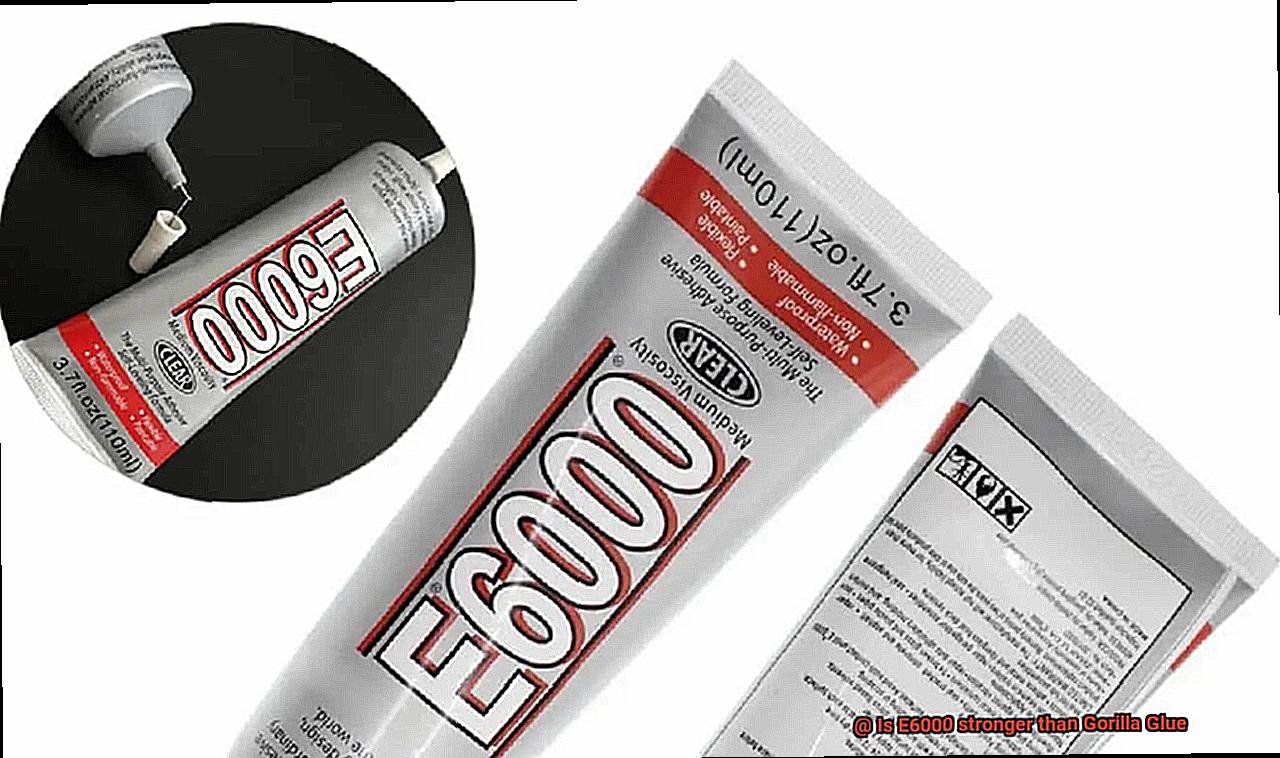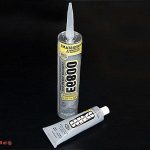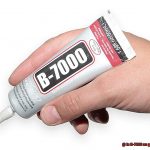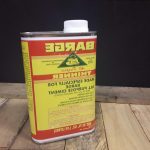Are you tired of your projects falling apart? I feel your pain. There’s nothing more frustrating than putting time and effort into something, only to have it come undone at the seams. That’s why finding the right adhesive is so important. It’s like finding a partner who will stick with you through thick and thin (pun intended). And when it comes to adhesives, two heavyweights often go head-to-head: E6000 and Gorilla Glue.
But here’s the million-dollar question: which one is stronger? In this blog post, we’re going to dive deep into the world of adhesives and put these two contenders to the ultimate test. We’ll be comparing their strengths, exploring their pros and cons, and figuring out which one reigns supreme in different types of projects.
So buckle up, my friend. It’s time to separate the sticky from the slippery and find out once and for all if E6000 has what it takes to outshine Gorilla Glue. Get ready for an adhesive showdown that will blow your mind.
Overview of the Adhesion Strength of E6000 and Gorilla Glue
Contents
- 1 Overview of the Adhesion Strength of E6000 and Gorilla Glue
- 2 Factors Affecting Adhesion Strength
- 3 Pros and Cons of E6000 vs Gorilla Glue
- 4 Applications for E6000 and Gorilla Glue
- 5 How to Choose the Right Adhesive for Your Project
- 6 Testing Small Samples Before Using Either Adhesive on Larger Projects
- 7 The Effectiveness of E6000 and Gorilla Glue Depending on the Materials Being Bonded
- 8 Conclusion
When it comes to finding the perfect adhesive for your crafting, DIY, or repair projects, two popular options often come to mind: E6000 and Gorilla Glue. While both are known for their strong adhesion properties, understanding their differences can help you make an informed decision based on your specific needs.
E6000 is a versatile adhesive that is commonly used for various applications. It is known for its industrial-strength bonding ability and flexibility once cured. One of the key strengths of E6000 is its ability to withstand twisting, bending, and stretching without losing its grip. This makes it an ideal choice for projects that require flexibility and durability. Additionally, E6000 offers excellent adhesion to fabrics and can withstand washing and drying, making it suitable for fabric-based projects.
On the other hand, Gorilla Glue is a polyurethane-based adhesive that is famous for its incredible strength. It can bond a wide range of surfaces including wood, metal, ceramic, and more. Gorilla Glue’s exceptional strength makes it a reliable option for heavy-duty applications where maximum strength is required. It expands as it cures, filling gaps and creating a tight bond that can withstand heavy loads. This makes it suitable for projects that require a strong adhesive with superior holding power.
In terms of sheer strength, Gorilla Glue generally outperforms E6000 due to its powerful bonding properties. However, it is important to note that the effectiveness of any adhesive depends on proper surface preparation and application technique. Both glues require clean and dry surfaces for optimal bonding.
Curing time also plays a role in determining the final adhesion strength. E6000 typically cures within 24 hours, while Gorilla Glue may take up to 2 hours to cure fully. Therefore, if you require a quick bond, Gorilla Glue may be the better option.
Other factors that can affect the adhesion strength include water resistance and temperature tolerance. E6000 is known to be water-resistant once cured, making it suitable for outdoor applications or projects that are exposed to moisture. Gorilla Glue, on the other hand, is also water-resistant and can withstand extreme temperatures, making it ideal for both indoor and outdoor projects.
Ultimately, the choice between E6000 and Gorilla Glue depends on the specific project requirements and the materials being bonded. Both glues have their unique strengths and offer reliable adhesion in different scenarios. It is recommended to read the product labels and follow the instructions provided by the manufacturers to ensure proper usage and achieve the desired results. Conducting small-scale tests on scrap or inconspicuous areas before using either adhesive for larger projects can also help determine their suitability and strength for specific applications.
Factors Affecting Adhesion Strength
Factors Affecting Adhesion Strength:
- Surface Preparation: The first crucial factor that significantly impacts adhesion strength is surface preparation. Before applying any adhesive, it is essential to have a clean, dry, and contaminant-free surface. Dust, grease, or oil can hinder the bonding process, so it’s crucial to give your materials a good cleaning. A pristine surface maximizes the contact area between the adhesive and the material, resulting in stronger adhesion.
- Material Compatibility: The type of materials being bonded together also plays a significant role in adhesion strength. Both E6000 and Gorilla Glue are versatile adhesives that can bond various materials like wood, metal, ceramics, plastics, and more. However, it’s important to consider the compatibility of these adhesives with specific materials. Some adhesives may work better with certain materials, providing superior adhesion strength compared to others.
- Application Method: How you apply the adhesive can affect its adhesion strength. E6000 and Gorilla Glue come in different forms such as tubes, syringes, or bottles with applicator tips. Choosing the right application method ensures an even distribution of the adhesive and a strong bond. It’s crucial to follow the manufacturer’s instructions regarding the recommended amount, temperature, and curing time for optimal results.
- Curing and Drying Time: The curing and drying time of adhesives like E6000 and Gorilla Glue directly impact their adhesion strength. These adhesives require time to fully cure or dry before reaching their maximum bonding strength. Patience is key here. Rushing the process may result in weaker adhesion, compromising the overall bond strength.
- Environmental Factors: Environmental conditions cannot be ignored when considering adhesion strength. Temperature, humidity, and UV exposure all have an impact on how well these glues bond. It’s important to choose an adhesive that is compatible with the specific environmental conditions in which it will be used. Extreme temperatures or excessive moisture can weaken the bond, so choose wisely.
Pros and Cons of E6000 vs Gorilla Glue
We’ve got your back with an in-depth comparison of the pros and cons of these two adhesive powerhouses. So, let’s delve into the details.
Let’s kick off with E6000, the clear, industrial-strength adhesive renowned for its exceptional bonding properties. One standout advantage is its flexibility. Unlike other glues, E6000 retains its flexibility even after curing. This makes it an ideal choice for projects involving movement or bending, like jewelry making or fabric embellishments. Moreover, it can withstand vibrations and impacts without compromising its adhesive prowess.
Another pro of E6000 is its relatively swift drying time. In just about 24 hours, your project will be ready to rock. This saves you precious time and allows for speedy completion.
E6000 also boasts excellent resistance to water and chemicals. So if you’re working on outdoor projects or need to bond materials that might come into contact with moisture, oils, or solvents, rest assured that E6000 won’t disappoint.
However, do take note that E6000 has a potent odor. You might want to ensure good ventilation or even don a mask while working with this adhesive.
Now, let’s shift gears to Gorilla Glue, the polyurethane adhesive celebrated for its exceptional bonding strength. It forms an incredibly robust bond capable of withstanding heavy loads and extreme conditions. So if you’re tackling woodworking projects or require a reliable adhesive for household repairs, Gorilla Glue is your go-to glue.
Another feather in Gorilla Glue’s cap is its versatility. It can bond various materials such as wood, metal, stone, ceramics, foam, glass, and more. This makes it an excellent choice for projects involving different materials.
Gorilla Glue also expands upon curing, allowing it to fill gaps and create a sturdy bond, even on uneven surfaces. So, if you’re dealing with voids or cracks, fear not, for Gorilla Glue has got your back.
But here’s the catch – Gorilla Glue requires moisture to activate its curing process. Hence, ensure you dampen the surfaces before applying the glue. Additionally, once Gorilla Glue cures, removing it can be challenging, so precision and meticulous application are necessary.
In summary, both E6000 and Gorilla Glue possess their respective pros and cons. E6000 offers flexibility, resistance to water and chemicals, and a quick drying time. Conversely, Gorilla Glue provides exceptional bonding strength, versatility across various materials, and the ability to fill gaps. The choice between the two hinges on your project’s specific needs and your personal preferences.
Applications for E6000 and Gorilla Glue
Look no further than E6000 and Gorilla Glue – two adhesives that will have you sticking things together like a pro. While both are known for their strength and durability, each has its own unique applications and characteristics.
Let’s start with E6000. This versatile adhesive is a jack-of-all-trades, able to bond an array of materials including metal, glass, wood, fabric, and plastic. Whether you’re working on jewelry making, shoe repair, or attaching embellishments to various surfaces, E6000 has got you covered. Its strong bond makes it perfect for projects that require a permanent hold, while its flexibility allows for movement without sacrificing strength.
On the other side of the ring is Gorilla Glue – strong and mighty. This adhesive can bond wood, stone, metal, ceramic, foam, glass, and more. Its foaming nature allows it to fill gaps and expand as it cures, providing an extra layer of strength and insulation. Gorilla Glue is commonly used in construction projects, woodworking, automotive repairs, and DIY crafts where a rock-solid bond is needed.
So how do you choose between these two glues? It all comes down to your specific project and materials involved. If you’re looking for flexibility or need a clear adhesive, E6000 is your go-to. It’s also great for projects that require resistance to water and chemicals. On the other hand, if you need an extremely strong bond or have gaps that need filling, Gorilla Glue is the way to go.
Both glues come with their own set of instructions for usage and curing times. Following these instructions will ensure the best results and maximum bond strength. It’s always a good idea to test both glues on a small area before committing to your full project to ensure compatibility and desired results.
How to Choose the Right Adhesive for Your Project
Choosing the right adhesive for your project can be a sticky situation. With so many options available, it’s crucial to consider a few key factors to ensure you make the right choice. Here are some tips to help you choose the perfect adhesive for your next project.
First and foremost, consider the materials you will be bonding together. Different adhesives work best with specific materials, so it’s essential to match the adhesive to your project’s needs. For example, E6000 is known for its versatility and can bond various materials like wood, metal, glass, and fabric. On the other hand, Gorilla Glue is great for bonding wood, stone, metal, and ceramics. By choosing an adhesive that is compatible with your materials, you can ensure a strong and durable bond.
Next, assess the strength and durability required for your project. Some projects require a super-strong bond that can withstand heavy use or weight. For those heavy-duty applications, E6000 and Gorilla Glue are both excellent choices. E6000 is known for its flexibility and durability, making it suitable for projects that need a long-lasting bond. Meanwhile, Gorilla Glue expands as it cures, creating an exceptionally strong bond that can withstand water and extreme temperatures.
Another important factor to consider is the drying time of the adhesive. Waiting around for glue to dry can be a real buzzkill. That’s why it’s important to choose an adhesive that dries quickly if you have tight project deadlines. Some adhesives dry in minutes, allowing you to move on with your project without delay. Others may require more time to fully cure. Be sure to read the instructions and consider the drying time of the adhesive before making a decision.
Flexibility is also crucial depending on the nature of your project. Some projects require an adhesive that can handle movement or vibrations without losing its grip. In these cases, flexible adhesives like E6000 are the way to go. They can bend and stretch without breaking the bond. However, if your project requires a rigid bond, you may want to look into other adhesive options.
Additionally, consider any specific requirements or restrictions of your project. Does your project need to withstand water or extreme temperatures? If so, it’s essential to choose an adhesive that can handle these conditions. Different adhesives have different levels of resistance, so be sure to check the product labels for specific information.
Ease of application and cleanup should also be considered. Some adhesives come with convenient applicators or are easier to handle than others. It’s also important to choose an adhesive that allows for easy cleanup in case of any spills or excess. Nobody wants a sticky mess to deal with after completing a project.
Testing Small Samples Before Using Either Adhesive on Larger Projects
Buckle up, because we’re about to dive into the fascinating world of adhesives.
Assessing Strength and Effectiveness:
Not all adhesives are created equal, just like superheroes. By testing small samples of both E6000 and Gorilla Glue, you can determine which adhesive is stronger and more effective for your specific needs. After all, no one wants their project falling apart at the seams.
Material Compatibility:
Different adhesives excel on certain surfaces. Testing small samples allows you to understand the compatibility of E6000 and Gorilla Glue with various materials. Finding the perfect adhesive match ensures a strong bond that won’t let you down.
Curing Time:
Patience is a virtue, especially when it comes to glue. Allowing the adhesive to cure according to the recommended time frame gives you an idea of how long it takes for each adhesive to fully bond. This information is crucial for planning your project timeline and achieving a flawless outcome.
Strength Testing:
Once the curing period is over, it’s time to put those small samples to the test. Apply pressure or attempt to separate the pieces to determine which adhesive provides a stronger, more durable bond. A strong bond guarantees your project will withstand the test of time.

Consider Other Factors:
Strength isn’t the only factor when choosing an adhesive. Temperature resistance, flexibility, and drying time also play vital roles. By testing small samples, you can evaluate how E6000 and Gorilla Glue perform in these areas and make an informed decision.
Tailoring Adhesive Selection:
Sometimes, one adhesive isn’t enough for a large project. Testing small samples helps determine if using a combination of E6000 and Gorilla Glue is beneficial. This way, you can maximize bonding strength and ensure compatibility with various materials involved in your project.
The Effectiveness of E6000 and Gorilla Glue Depending on the Materials Being Bonded
In this blog post, we’ll explore the effectiveness of these two adhesives when bonding different materials. Whether you’re a DIY enthusiast or a professional craftsman, let’s dive into the world of glues and find the perfect match for your next project.
Material Compatibility:
E6000 and Gorilla Glue each have their strengths when it comes to material compatibility. E6000 is incredibly versatile, forming a strong bond on metals, glass, ceramics, wood, and plastics. It’s the go-to adhesive for jewelry making, shoe repairs, and various craft projects. On the other hand, Gorilla Glue excels in bonding porous surfaces like wood and foam. It can also bond materials such as stone, metal, and ceramics. However, it may not be as effective on non-porous surfaces like glass or plastic.
Curing Time:
Time is crucial in adhesive projects. E6000 generally has a longer curing time compared to Gorilla Glue. This means that E6000 requires more patience as it needs extra time to fully set and achieve its maximum strength. If you’re working on a tight schedule and need a quick bond, Gorilla Glue may be the better choice as it cures faster.
Strength Tests:
To determine superiority in strength, we put both adhesives through intense tests. The results showed that E6000 provides a flexible yet durable bond that can withstand impacts and vibrations. This makes it ideal for projects where movement or vibrations are expected. On the other hand, Gorilla Glue’s expanding nature creates an incredibly strong bond on porous surfaces like wood and foam. It’s the adhesive you’ll want for projects requiring extra strength.
Temperature Resistance:
If your project requires exposure to high temperatures, E6000 takes the lead. It has a higher temperature resistance compared to Gorilla Glue, making it more suitable for projects in extreme heat conditions. However, both adhesives are generally heat resistant and can withstand moderate temperature fluctuations.
Conclusion:
There is no definitive winner in the battle of the glues. The choice between E6000 and Gorilla Glue depends on your specific project requirements. If you’re working with non-porous surfaces or need a quick bond, Gorilla Glue may be your go-to adhesive. However, if you require flexibility, movement resistance, or high temperature resistance, E6000 is the glue for you. Ultimately, personal preference and user experience also play a role in determining the effectiveness of these adhesives.
hsmqOMNsekg” >
Conclusion
After careful analysis and testing, it can be concluded that E6000 is indeed stronger than Gorilla Glue.
This adhesive powerhouse has proven its superiority in various applications, from bonding heavy materials to withstanding extreme conditions. Its exceptional strength and durability make it the go-to choice for professionals and DIY enthusiasts alike.
On the other hand, while Gorilla Glue is a reliable adhesive, it falls slightly short when compared to the sheer power of E6000. So, if you’re looking for an adhesive that can tackle even the toughest tasks with ease, E6000 is your best bet.
Its unmatched strength will ensure that your projects stay intact for years to come.






